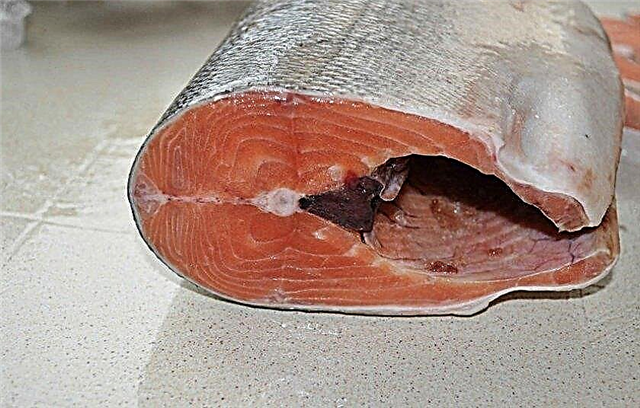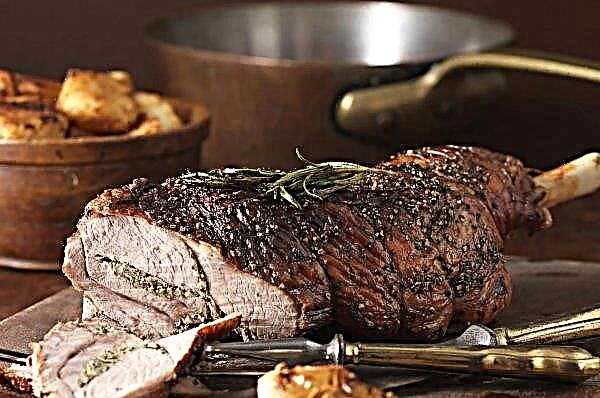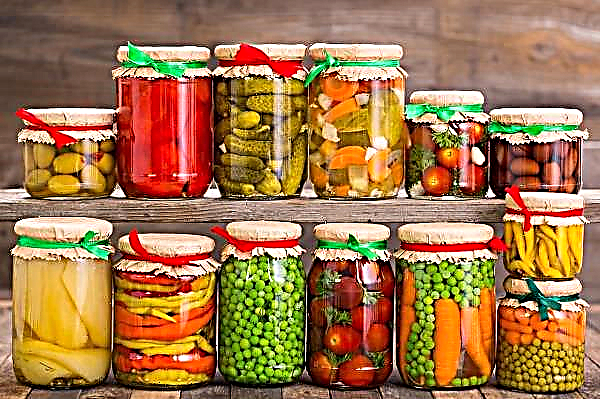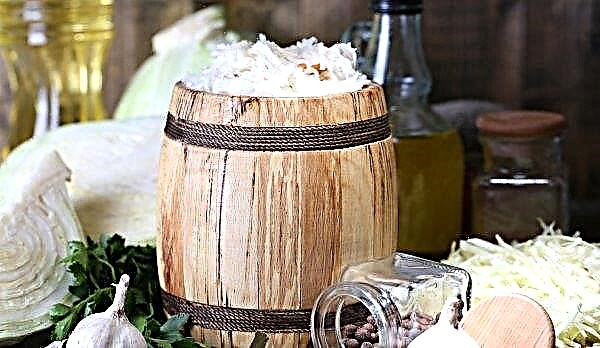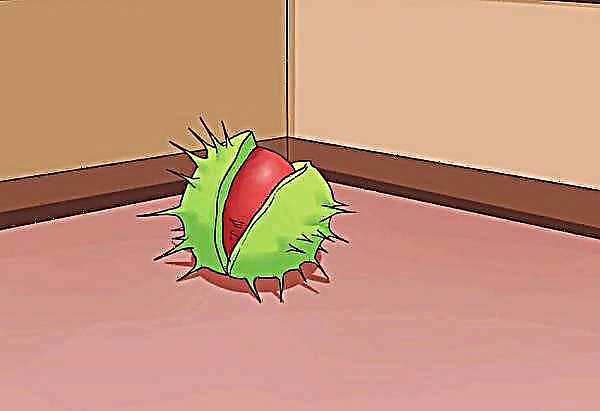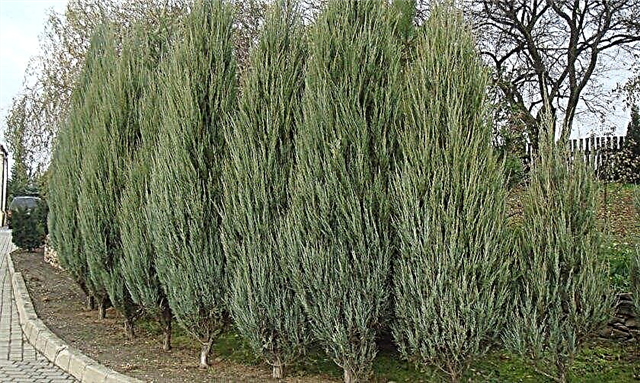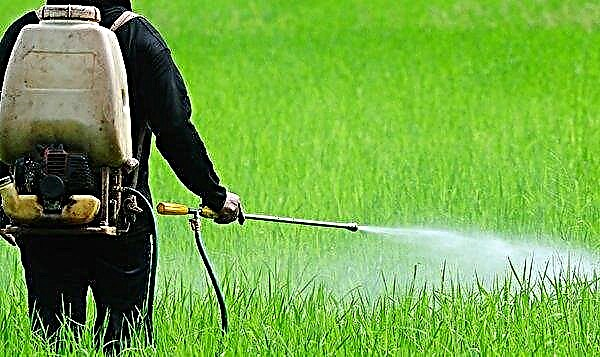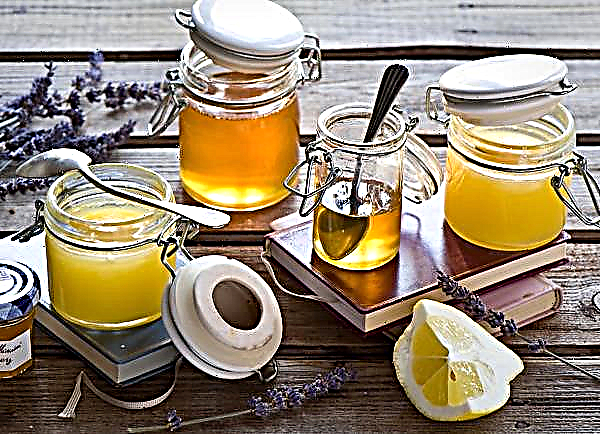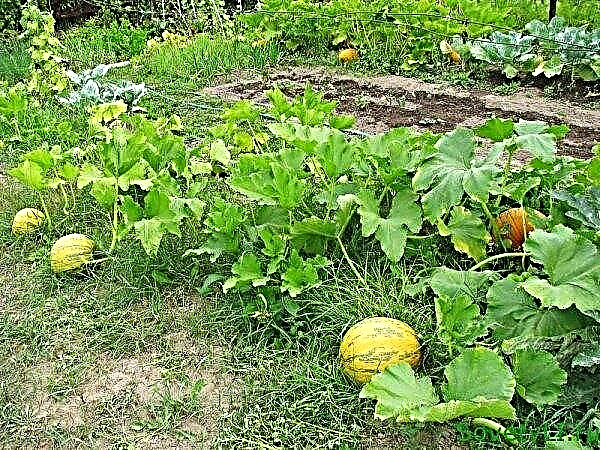Professional farmers greatly praise Watermelon Producer. The characteristics of the variety are really impressive, so many gardeners plant berries on their sites. Read more about how to plant and grow a variety correctly.
Description and characteristics of the variety
AU Producer PVP is an improved version of the popular Crimson Sweet watermelon. The variety was bred by American breeders at the end of the 20th century.
The variety has the following botanical characteristics:Did you know? Watermelons come from South Africa. In South Africa, Lesotho, Botswana and Namibia, there is a wild type of berry - colocint.
- shoots are thick, strong, medium length, highly leafy;
- leaves are moderately dissected, large, bright green;
- oval-shaped fruits;
- the weight of one watermelon is 8-12 kg;
- color is green with light green stripes;
- the peel is even, up to 1 cm thick, pale green at the cut;
- the flesh is bright red, granular, without streaks, crispy;
- seeds are brown, small in size.
Photo gallery
Advantages and disadvantages
- The advantages of the variety include:
- early ripening;
- cultivation both in closed greenhouses and in fields;
- optimal yield;
- germination of the crop up to 90%;
- sweet crisp flesh;
- resistance to a number of diseases;
- keeping quality;
- transportability.
- Gardeners also name a number of shortcomings of the Producer:
- whimsical to the microclimate;
- exactingness to fertilizers and irrigation.
Optimal timing for growing
Watermelons are whimsical to the temperature of the soil and air, so the weather is important when planting. In order for the seeds or seedlings to begin to grow, observe the sowing dates:
- sow seeds for seedlings on April 15-30;
- transplant seedlings in the garden or in the greenhouse by the end of May;
- Sow seeds in open ground not earlier than May 20.
 You can also determine the time by the temperature of the soil. Seedlings and seeds will grow when the soil warms up to +14 ... + 16 ° C.
You can also determine the time by the temperature of the soil. Seedlings and seeds will grow when the soil warms up to +14 ... + 16 ° C.Preparatory work
For a successful planting, farmers carry out preparatory work. It is important to correctly select and prepare the site, process the seeds, and also study the rules of planting.
Site selection and preparation
Harvest ripens better on a site that meets the following standards:
- lack of shadow;
- sandy or sandy loam substrate with an acidity of 6.7–7.0 pH;
- lack of close groundwater;
- the predecessors were cabbage, legumes, onions, alfalfa, wheat, but not melons.
 In the fall, the soil in the area is fed with fertilizers - compost, dolomite flour or ash. Immediately before landing, the site should be loosened.
In the fall, the soil in the area is fed with fertilizers - compost, dolomite flour or ash. Immediately before landing, the site should be loosened.Seed preparation
Seeds for seedlings and soil are prepared equally. For best results, follow these steps step by step:
- Calibrate the seeds to fit.
- Soak the material in saline. Pop-up grains can be thrown away. Dry the seeds that have fallen to the bottom.
- Warm dry material at a temperature of +50 ... + 60 ° С for 0.5–2 hours.
- Soak the heated seeds in a potassium permanganate solution for 0.5–1 hours.
- Soak the material in wet gauze. When sprouts appear from seeds, they can be sown.

Rules for landing
The main landing rule is temperature. At indicators below + 12 ° C, the berry will not grow. The soil should warm up to a minimum of + 14 ° С. In the best way, the watermelon of this variety grows at a temperature of +20 ... + 25 ° C.
Cultivation methods
Producer varieties watermelons are grown in two ways: seedlings and seedlings. There are also two options regarding the landing site - the culture is grown in greenhouses and in open areas.
Important! Seedlings give better results, especially in temperate regions. Southern gardeners can safely practice both methods.
Seedling method
Seedling method consists in preliminary sowing watermelons and growing seedlings at home. When the seedlings grow up, it is transplanted to an open area.
Landing time
Seeds for seedlings are sown in the second half of April. At such times, by the end of May, farmers can already plant seedlings in open ground.
Landing technology
For planting, use separate cups filled with a suitable soil mixture. From acceptable options:
- 3 parts humus and 1 part sod land;
- 6 parts of peat, 2 parts of sawdust and 1 part of humus;
- purchased soil mix;
- peat tablets.
Seedling Care
Immediately after planting, the pot is covered with a film. In this form, crops should be put in place with a temperature of + 25 ° C. When the first shoots appear, remove the film and rearrange the seedlings into the light. During the growth of seedlings, periodically moisten the soil from the spray gun. By the end of May, seedlings should have 3-5 leaves. 1.5 weeks before the transplant, begin to temper the seedlings. To do this, take them out daily. On the first day, leave the plants for 1 hour, then increase the period every day. Now seedlings can be planted in the ground.
1.5 weeks before the transplant, begin to temper the seedlings. To do this, take them out daily. On the first day, leave the plants for 1 hour, then increase the period every day. Now seedlings can be planted in the ground.
Planting seedlings in the ground
Plant seedlings as follows.
- Dig holes. In greenhouses, plant seedlings according to the scheme 70 × 70 cm, in the garden - 1.5 × 1 m.
- Remove seedlings from cups and transfer to wells.
- Sprinkle holes in the soil.
- Water the seedlings.
Seed directly into the ground
Farmers in the southern latitudes can safely sow seeds directly into the soil. Land as follows:
- Dig holes according to the scheme 1 m between rows and 0.5 between bushes in rows.
- Deepen the seeds 5 cm into the soil.
- Fill the crops with soil.
- Water the plantings.
Video: Planting a watermelon under a film
Care Features
Watermelon Producer is whimsical in growing. To get a quality crop on time, you need to properly water, fertilize and form a bush. Experienced gardeners also monitor the condition of the berry during the growth period in order to notice pests or diseases in time.
Did you know? Archaeologists have discovered watermelon seeds 3500 years old in Sudan and 7000 years in Libya.
Watering rates
Watering is extremely important for culture. The growth and ripeness of the fruit depends on proper hydration.
The producer's irrigation system depends on the growth stage.
| Growth stage | Number of irrigations |
| The appearance of ovaries | Daily morning and evening |
| Bloom | 1 time in 3-4 days |
| Fruit formation | Reduce watering |
| Fruit ripening | Do not water |
Farmers usually use one of two methods:
- bush irrigation;
- drip irrigation.
 Water for irrigation is required. Its temperature should not be lower than air temperature.
Water for irrigation is required. Its temperature should not be lower than air temperature.Top dressing
The producer begins to feed watermelon immediately after the appearance of the ovaries. Fertilizers are applied 1 time per week in pre-moistened soil. Means are best used based on minerals.
Fertilizers, like irrigation, depend on the stage of crop growth.
| Growth stage | Fertilizers |
| Ovary formation | Complex potash-phosphorus-nitrogen |
| Fruit ripening | Potassium phosphorus |
Important! Fresh manure cannot be used to fertilize watermelons.
Bush formation
Shape the bush as follows:
- tie the main shoot to the support;
- cut lashes on the sides from 0.5 m;
- pinch the remaining shoots to three ovaries;
- leave only two stepson on the main trunk.

Pest and Disease Control
The advantage of the Producer variety in its resistance to common diseases:
- stem rot;
- anthracnose.
- Root rot. Manifestations: brown wet spots, yellow leaves, stench. Treatment: treatment with copper sulfate, Fundazole or ash.

- Powdery Mildew Manifestations: white coating on the leaves, similar to flour. Treatment: treatment with Topaz.
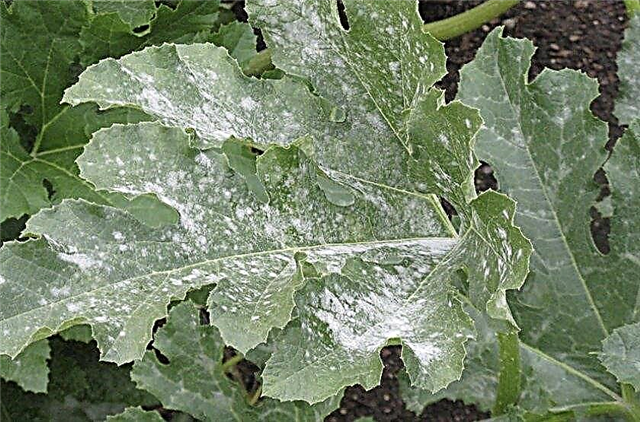
- Spider mite. Manifestations: drying of leaves, cobweb-shaped plaque. Treatment: Agravertin treatment.

- Gourd aphids. Manifestations: leaves and stems are covered with a colony of insects, leaf plates turn black, shoots twist. Treatment: treatment with Actellic or Fitoverm.
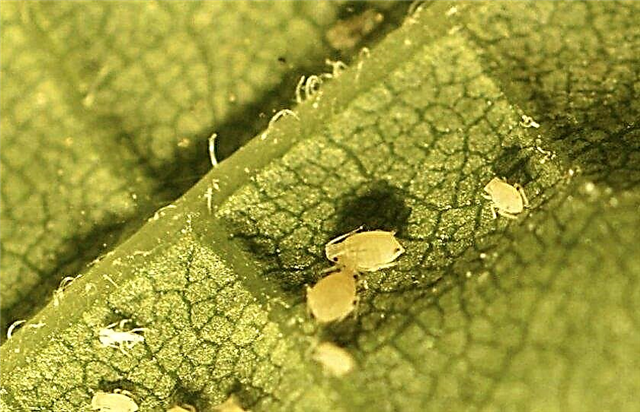
- disinfect the soil before sowing seedlings;
- disinfect seeds with Fitosporin;
- water the bushes correctly, avoiding sprinkling;
- properly fertilize the culture;
- inspect plantations periodically.
To prevent the disease from spreading, break off and burn the affected parts.
Harvesting and storage
When determining the timing of collection, pay attention to the location of landings. In the south, the fruits ripen in mid-July. In a temperate climate, the berry will be ripe by September.
Harvesting fruits is preferably manual. Harvesting is very simple - just tear off the watermelon from the main stem, leaving 3-5 cm of the stalk. Store watermelons in a dark place with good ventilation.
Store watermelons in a dark place with good ventilation.
Useful recommendations from gardeners
Observing the cultivation agricultural technique, the gardener will get a good harvest. For an excellent result, pay attention to the following tips from experienced agronomists:
- Use professional primers to increase germination to 98-99%. According to the experience of gardeners, the substrate Klasman shows himself perfectly.
- In high areas, the sun warms up the plantings better, therefore, watermelons grow more actively and spets better.
- Indoor plantings in case of unexpected cooling below + 12 ° C are covered with agrofibre or film.





